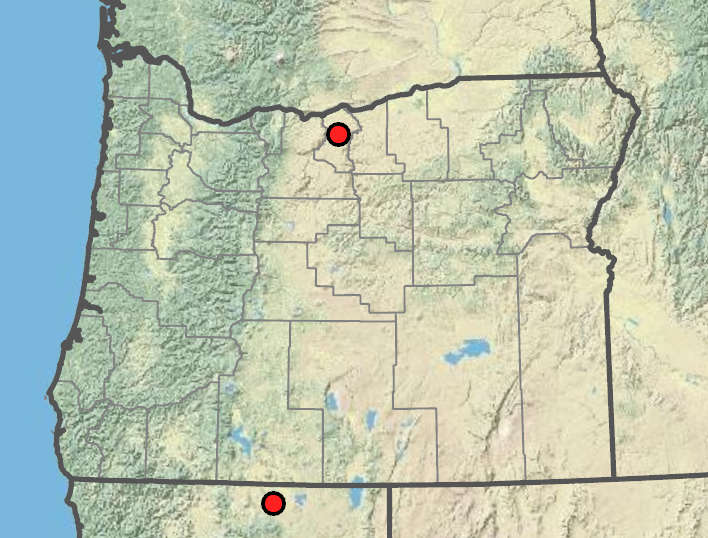|
Mexican rush
|
| Plants perennial, 15–65 cm tall, rhizomatous, fresh stems smooth, slightly shiny, dark green to blue-green, dried stems with 0–14 weak ridges visible per side. |
with some well-developed blades on distal sheaths 4–10 cm, pale brown to dark brown distally; dull or shiny; smooth; apex symmetrical; thin, not winged. |
loose clusters; at least some branches usually visible; inflorescence bracts not swollen. |
tepals 6; dark brownstriped; stamens 6; filaments 0.2–0.4 mm; anthers 1.2–2.2 mm; styles 0.8–0.9 mm. |
4–5 mm; shorter than the tepals, dark brown; apex acute, 1-chambered. |
0.7–1 × 0.4– 0.45 mm, apiculate. |
|
|
|
| |
Floodplains, canyon bottoms. 500–600 m. Col. CA, NV; southeast to CO and TX; south to South America. Native. This species looks much like J. balticus but has distinctive, stem-like leaf blades on some stems. |
Flora of Oregon, volume 1, page 280
Peter Zika |
J. acuminatus, J. anthelatus, J. articulatus, J. balticus, J. bolanderi, J. brevicaudatus, J. breweri, J. bryoides, J. bufonius, J. bulbosus, J. canadensis, J. capillaris, J. capitatus, J. compressus, J. confusus, J. conglomeratus, J. covillei, J. diffusissimus, J. drummondii, J. dudleyi, J. effusus, J. ensifolius, J. ensifolius x Juncus nevadensis, J. exiguus, J. falcatus, J. filiformis, J. gerardi, J. hemiendytus, J. hesperius, J. howellii, J. inflexus, J. interior, J. kelloggii, J. laccatus, J. lescurii, J. longistylis, J. marginatus, J. mertensianus, J. nevadensis, J. occidentalis, J. orthophyllus, J. oxymeris, J. parryi, J. patens, J. pelocarpus, J. planifolius, J. ranarius, J. regelii, J. saximontanus, J. supiniformis, J. tenuis, J. tiehmii, J. torreyi, J. triglumis, J. trilocularis, J. uncialis |
| Juncus arcticus var. mexicanus |
|
